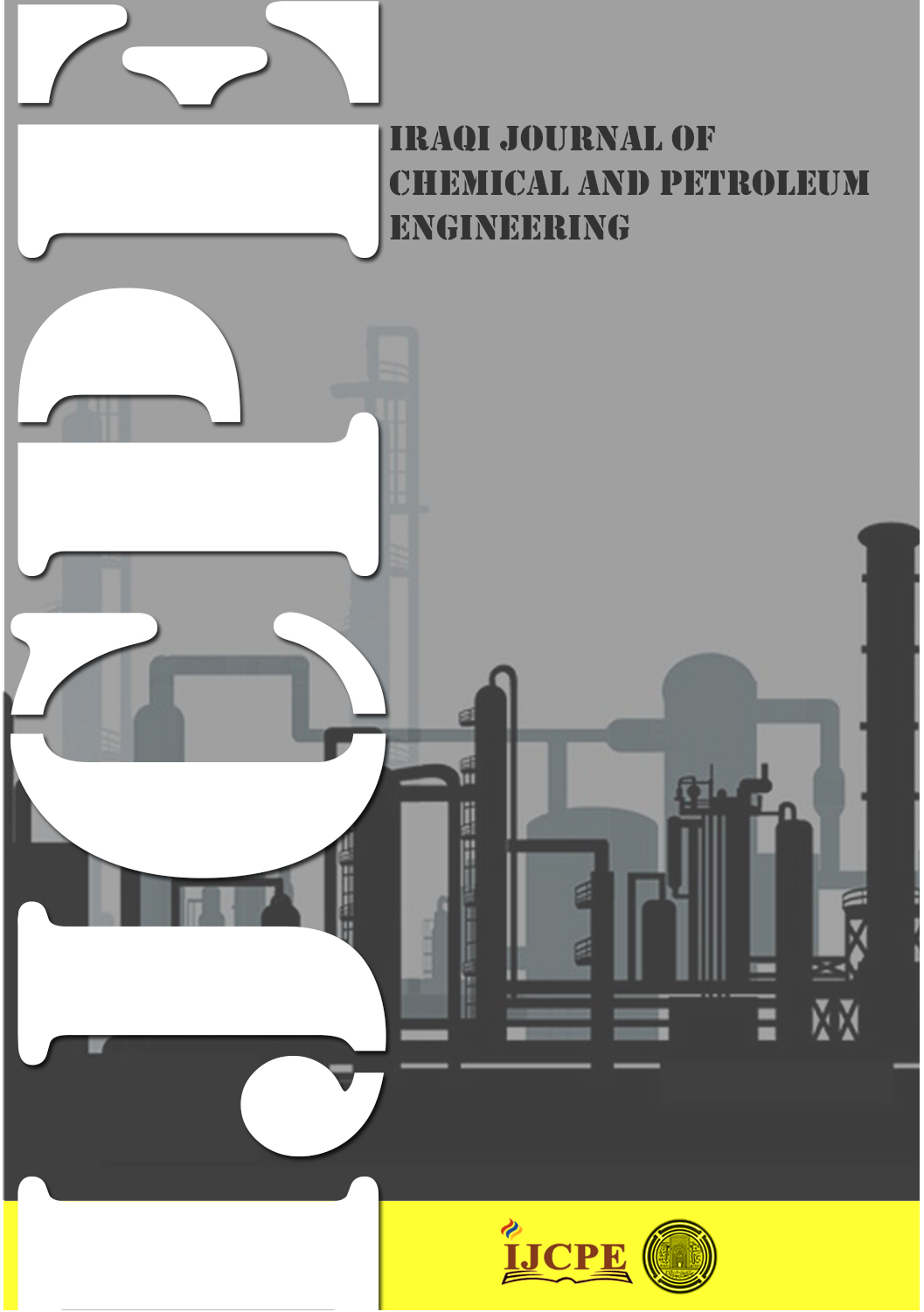Lithology and minerals identification from well logs for Mishrif Formation in Ratawi oilfield
DOI:
https://doi.org/10.31699/IJCPE.2025.1.13Keywords:
Lithology; Minerals; Mishrif formation; Ratawi oilfieldAbstract
Lithology identification plays a crucial role in reservoir characteristics, as it directly influences petrophysical evaluations and informs decisions on permeable zone detection, hydrocarbon reserve estimation, and production optimization. This paper aims to identify lithology and minerals composition within the Mishrif Formation of the Ratawi Oilfield using well log data from five open hole logs of wells RT-2, RT-4, RT-5, RT-6, and RT-42. At this step, the logging lithology identification tasks often involve constructing a lithology identification model based on the assumption that the log data are interconnected. Lithology and minerals were identified using three empirical methods: Neutron-Density cross plots for lithology identification, M-N cross plots (also known as Litho-porosity cross plots) for mineral identification, and Matrix identification (MID) plots. Neutron-density cross plots show that the Mishrif formation consists of limestone with some data points tending to the dolomite line east of the field and to the sandstone line west of the field. The M-N and MID plots indicate that calcite is the major mineral for the Mishrif formation; however, quartz grows to the west of the area while dolomite increases to the east. These findings underscore the importance of integrating multiple well-log interpretation techniques to capture lithologic and mineralogical complexity, providing critical insights for reservoir management and targeted exploitation strategies in heterogeneous carbonate systems.
Received on 17/05/2024
Received in Revised Form on 27/07/2024
Accepted on 30/07/2024
Published on 30/03/2025
References
[1] J. Chang et al., “Active domain adaptation with application to intelligent logging lithology identification,” IEEE Transactions on Cybernetics, vol. 52, no. 8, pp. 8073–8087, 2021, https://doi.org/10.1109/TCYB.2021.3049609
[2] O. Salman, O. Al-Fatlawi, and S. Al-Jawad, “Reservoir characterization and rock typing of carbonate reservoir in the Southeast of Iraq,” Iraqi Geological Journal, pp. 221–237, 2023, https://doi.org/10.46717/igj.56.1A.17ms-2023-1-29
[3] D. J. Sadeq, A. Almomen, H. H. Hamad, and U. Alameedy, “Exploring the Impact of Petrophysical Uncertainties on Recoverable Reserves: A Case Study,” Iraqi Geological Journal, pp. 47–61, 2024, https://doi.org/10.46717/igj.57.1C.4ms-2024-3-16
[4] I. Q. H. Tukkee, S. A. Hussain, and A. M. Sahaab, “Reservoir Characteristics for Khasib Formation in selected wells of East Baghdad Oil field, Iraq,” Iraqi Journal of Science, pp. 4502–4517, 2023, https://doi.org/10.24996/ijs.2023.64.9.18
[5] A. M. Al-Heeti, O. F. Al-Fatlawi, and M. M. Hossain, “Evaluation of the Mishrif Formation using an advanced method of interpretation,” Iraqi Journal of Chemical and Petroleum Engineering, vol. 24, no. 2, pp. 41–51, 2023, https://doi.org/10.31699/IJCPE.2023.2.5
[6] M. H. Mahmood and D. J. Sadeq, “Study of petrophysical properties of a Yamama reservoir in Southern Iraqi oil field,” in AIP Conference Proceedings, AIP Publishing, 2023, https://doi.org/10.1063/5.0167933
[7] B.-Z. Hsieh, C. Lewis, and Z.-S. Lin, “Lithology identification of aquifers from geophysical well logs and fuzzy logic analysis: Shui-Lin Area, Taiwan,” Computers & Geosciences, vol. 31, no. 3, pp. 263–275, 2005, https://doi.org/10.1016/j.cageo.2004.07.004
[8] H. Özdemir, K. Flanagan, and E. Tyler, “Lithology and hydrocarbon mapping from multicomponent seismic data,” Geophysical Prospecting, vol. 58, no. 2, pp. 297–306, 2010, https://doi.org/10.1111/j.1365-2478.2009.00821.x
[9] C. M. Saporetti, L. G. da Fonseca, and E. Pereira, “A lithology identification approach based on machine learning with evolutionary parameter tuning,” IEEE Geoscience and Remote Sensing Letters, vol. 16, no. 12, pp. 1819–1823, 2019, https://doi.org/10.1109/LGRS.2019.2911473
[10] S. Dong, Z. Wang, and L. Zeng, “Lithology identification using kernel Fisher discriminant analysis with well logs,” Journal of Petroleum Science and Engineering, vol. 143, pp. 95–102, 2016, https://doi.org/10.1016/j.petrol.2016.02.017
[11] M. Tian, H. Omre, and H. Xu, “Inversion of well logs into lithology classes accounting for spatial dependencies by using hidden markov models and recurrent neural networks,” Journal of Petroleum Science and Engineering, vol. 196, p. 107598, 2021, https://doi.org/10.1016/j.petrol.2020.107598
[12] G. FU, J. YAN, K. Zhang, H. HU, and F. LUO, “Current status and progress of lithology identification technology,” Progress in Geophysics, vol. 32, no. 1, pp. 26–40, 2017, https://doi.org/10.6038/pg20170104
[13] Y. Xie, C. Zhu, W. Zhou, Z. Li, X. Liu, and M. Tu, “Evaluation of machine learning methods for formation lithology identification: A comparison of tuning processes and model performances,” Journal of Petroleum Science and Engineering, vol. 160, pp. 182–193, 2018, https://doi.org/10.1016/j.petrol.2017.10.028
[14] Z. A. Hadi, O. F. Al-Fatlawi, and A. Kadkhodaie, “Estimation of the Petrophysical Properties of the Lower Cretaceous Yamama (YC) Formation in Siba Field,” Iraqi Journal of Chemical and Petroleum Engineering, vol. 24, no. 4, pp. 47–57, 2023, https://doi.org/10.31699/IJCPE.2023.4.5
[15] A. A. M. Aqrawi, G. A. Thehni, G. H. Sherwani, and B. M. A. Kareem, “Mid‐Cretaceous rudist‐bearing carbonates of the Mishrif Formation: An important reservoir sequence in the Mesopotamian Basin, Iraq,” Journal of petroleum Geology, vol. 21, no. 1, pp. 57–82, 1998, https://doi.org/10.1111/j.1747-5457.1998.tb00646.x
[16] M. S. Al–Kubaisi and M. M. Ahmed, “Development of Ratawi Oil Field, Southern Iraq,” Iraqi Journal of Science, vol. 59, no. 1B, pp. 329–336, 2018.
[17] I. A. Al-Iessa and W. Z. Zhang, “Facies evaluation and sedimentary environments of the Yamama Formation in the Ratawi oil field, South Iraq,” Scientific Reports, vol. 13, no. 1, Dec. 2023, https://doi.org/10.1038/s41598-023-32342-9
[18] S. Limited, Schlumberger Log Interpretation Charts. Schlumberger, 1985.
[19] H. M. Alrekabi and O. F. Al-Fatlawi, “Integrating Rock Typing and Petrophysical Evaluations to Enhance Reservoir Characterization for Mishrif Formation in Garraf Oil Field,” Iraqi Geological Journal, pp. 131–152, 2024, https://doi.org/10.46717/igj.57.1D.12ms-2024-4-22
[20] S. A. Jassam, A.-F. Omer, and C. H. Canbaz, “Petrophysical Analysis Based on Well Logging Data for Tight Carbonate Reservoir: The SADI Formation Case in Halfaya Oil Field,” Iraqi Journal of Chemical and Petroleum Engineering, vol. 24, no. 3, pp. 55–68, 2023, https://doi.org/10.31699/IJCPE.2023.3.6
[21] J. La Vigne, M. Herron, and R. Hertzog, “Density-Neutron Interpretation in Shaly Sands.” OnePetro, Jun. 19, 1994. Accessed: Feb. 11, 2024.
[22] K. I. Gardi, B. Q. Aziz, and E. N. Baban, “Determine the Reservoir Characterization, Using Seismic Data, Well Logs, Attribute Interpretation, and Static Modelling in the Duhok Province, Kurdistan Region, Iraq,” Iraqi Geological Journal, pp. 161–181, 2024, https://doi.org/10.46717/igj.57.1B.13ms-2024-2-22
[23] M. Mohammed, A. N. Hameed, and H. N. Abd, “Determination of the Petrophysical Properties of the Khasib Reservoir, East Baghdad Oil Field, Middle Iraq,” Iraqi National Journal of Earth Science, vol. 22, no. 1, pp. 65–75, 2022, https://doi.org/10.33899/earth.2022.133567.1013
[24] M. H. Mahmood and D. J. Sadeq, “Study of petrophysical properties of a Yamama reservoir in Southern Iraqi oil field,” in AIP Conference Proceedings, AIP Publishing, 2023, https://doi.org/10.1063/5.0167933
[25] J. A. Burke, R. L. Campbell, and A. W. Schmidt, “The litho-porosity cross plot a method of determining rock characteristics for computation of log data,” in SPE Illinois Basin Regional Meeting, OnePetro, 1969, https://doi.org/10.2118/2771-MS
[26] M. R. Giles and J. D. Marshall, “Constraints on the development of secondary porosity in the subsurface: re-evaluation of processes,” Marine and Petroleum Geology, vol. 3, no. 3, pp. 243–255, 1986, https://doi.org/10.1016/0264-8172(86)90048-6
[27] C. Clavier and D. H. Rust, “Mid plot: A new lithology technique,” The Log Analyst, vol. 17, no. 06, 1976.
[28] R. A. Hashim and G. M. Farman, “Evaluating Petrophysical Properties of Sa’di Reservoir in Halfaya Oil Field,” Iraqi Geological Journal, pp. 118–126, 2023, https://doi.org/10.46717/igj.56.2D.9ms-2023-10-15
[29] H. A. Chafeet, A. M. Handhal, and M. K. Raheem, “Microfacies and depositional analysis of the mishrif formation in selected wells of Ratawi oilfield, southern Iraq,” Iraqi Geological Journal, vol. 53, no. 2, pp. 127–153, 2020, https://doi.org/10.46717/igj.53.2b.7rs-2020-09.07
[30] B. A. Al-Baldawi, “Integrated Core and Log Data to Determine the Reservoir Flow Unit and Rock Facies for Mishrif Formation in South Eastern Iraq,” Iraqi Geological Journal, pp. 118–134, 2023, https://doi.org/10.46717/igj.56.1F.9ms-2023-6-17
[31] M. A. J. Al-Mashhdani and A. A. H. Al-Zaidy, “Petrophysical properties and reservoir assessment of Mishrif Formation in Eridu oil field, Southern Iraq,” Iraqi Journal of Science, pp. 1829–1843, 2023, https://doi.org/10.24996/ijs.2023.64.4.23
Downloads
Published
Issue
Section
License
Copyright (c) 2025 The Author(s). Published by College of Engineering, University of Baghdad.

This work is licensed under a Creative Commons Attribution 4.0 International License.













